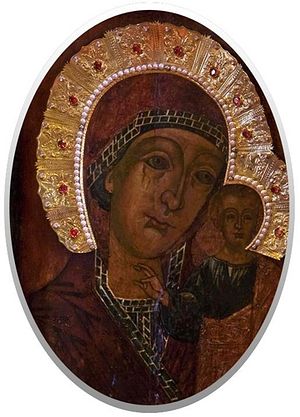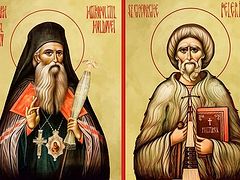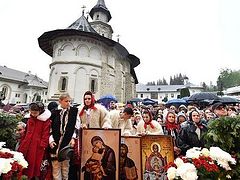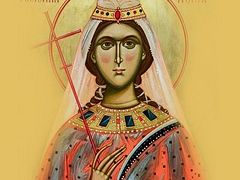Bucharest, February 16, 2018
The Holy Synod of the Romanian Orthodox Church resolved in a working session on Thursday under the chairmanship of His Beatitude Patriarch Daniel of Romania to include the wonderworking Syriaca Icon of the Mother of God of Ghighiu Monastery and St. Matrona of Moscow into its official liturgical calendar.
The Ghighiu Convent is located in the village of Barcăneşti, Prahova County, 44 miles north of Bucharest. The Syriaca Icon of the Mother of God, arrived to Romania in 1958, brought by Bishop Vasilios Samaha of Sergiopolis of the Patriarchate of Antioch following a dream in which the Theotokos instructed him to bring the icon, painted on sandalwood in the Syrian school in the 16th century, to Patriarch Justinian. He presented the icon to the patriarch at Ghighiu Monastery.
Since 1958, many believers have testified that they received quick help, healing, and strengthening of faith after praying to the Mother of God before her holy Syriaca Icon.
The Holy Synod resolved to celebrate the wonderworking icon on the same day as the Lifegiving Spring of the Mother of God, on Bright Friday.
As previously reported, the Metropolitan Synod of Muntenia and Dobruja approved a proposal to officially add St. Matrona of Moscow to the Church’s calendar on February 6, with the proposal then going to the Holy Synod of the entire Romanian Church.
Meeting a week later, the Holy Synod decided to officially enter St. Matrona of Moscow into the Romanian Church’s calendar on May 2 beginning in 2019, reports the Romanian Patriarchate’s Basilica News Agency.
St. Matrona was canonized by the Russian Orthodox Church in 1999, and is one of the most beloved saints in Russia today. Hundreds and thousands of people wait in line to venerate her relics daily. The faithful also bring flowers as an offering and sign of devotion to St. Matrona.
In Moscow for the Russian Church’s celebration of the 100th anniversary of the restoration of the patriarchal throne, Pat. Daniel celebrated the Divine Liturgy on Sunday, December 3 at Holy Protection Monastery, where St. Matrona’s relics are located, thus experiencing for himself the grace that God pours out through St. Matrona, and the people’s great love for her.




